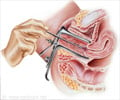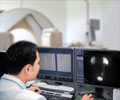General Info about Ultrasound
Wondering what the above lines refer to? It reflects Sound, which is the basis of life and even has healing powers. Not convinced? Then think of those times when you have lost yourself completely listening to good music or perhaps mesmerized by the sound created by sea waves bashing against the shore? Now may be you agree with the remarkable power of sound to provide comfort.
Sound is nothing but a form of vibration, known to evoke myriad emotions. For many of us, certain sounds bring back fond memories that could send us into raptures. For some others, it could mean a recollection of sad events that have happened in their lives. All in all, sound provides a powerful emotional trigger eliciting varied responses from all those within earshot.
The simplest definition of sound - 'a wave with a string of compressions in the air'. When we talk, our vocal chords vibrate back and forth. This vibration disturbs the air molecules nearby. When this disturbance hits the eardrum, the vibration is picked up by the nerves to the brain,which perceives the sound.
However, human beings cannot hear all forms of sound. The human ear recognizes sounds if the vibrations per second, called as frequency, falls between 20 and 20,000 vibrations per second. This measure could vary between persons.
Subsonic waves portray frequencies below audible waves. Those waves with frequencies higher than the audible range are called as ultrasonic waves.If speech is Silver, Silence is Golden. The above quote holds good especially in the case of ultrasound waves, which is being used for obtaining information about the structure and function of the human body.
What are Ultrasound Waves?
Ultrasound waves for imaging are generated by transducers, which convert electrical energy into sound energy. These waves are transmitted through the human body by placing the transducer over the surface of the skin.
When these sound waves travel through the human body, it is reflected back by the organs present inside, just like how a ball bounces back after hitting a wall. The sound waves, which are thus reflected, are again picked up by the same transducer. This is then transformed into visual images that provide a real time imaging of the organ being studied. The information that is obtained can then be permanently recorded on hard copy, film, videotape or both.










